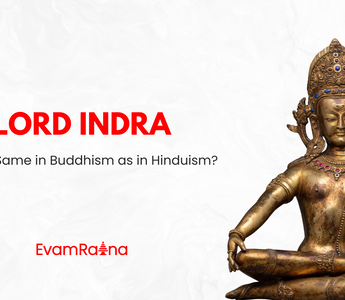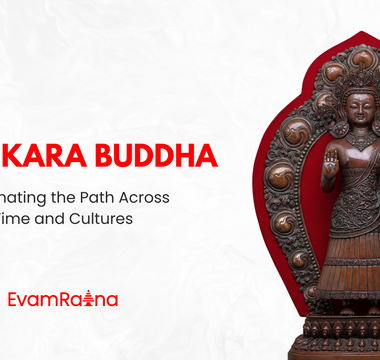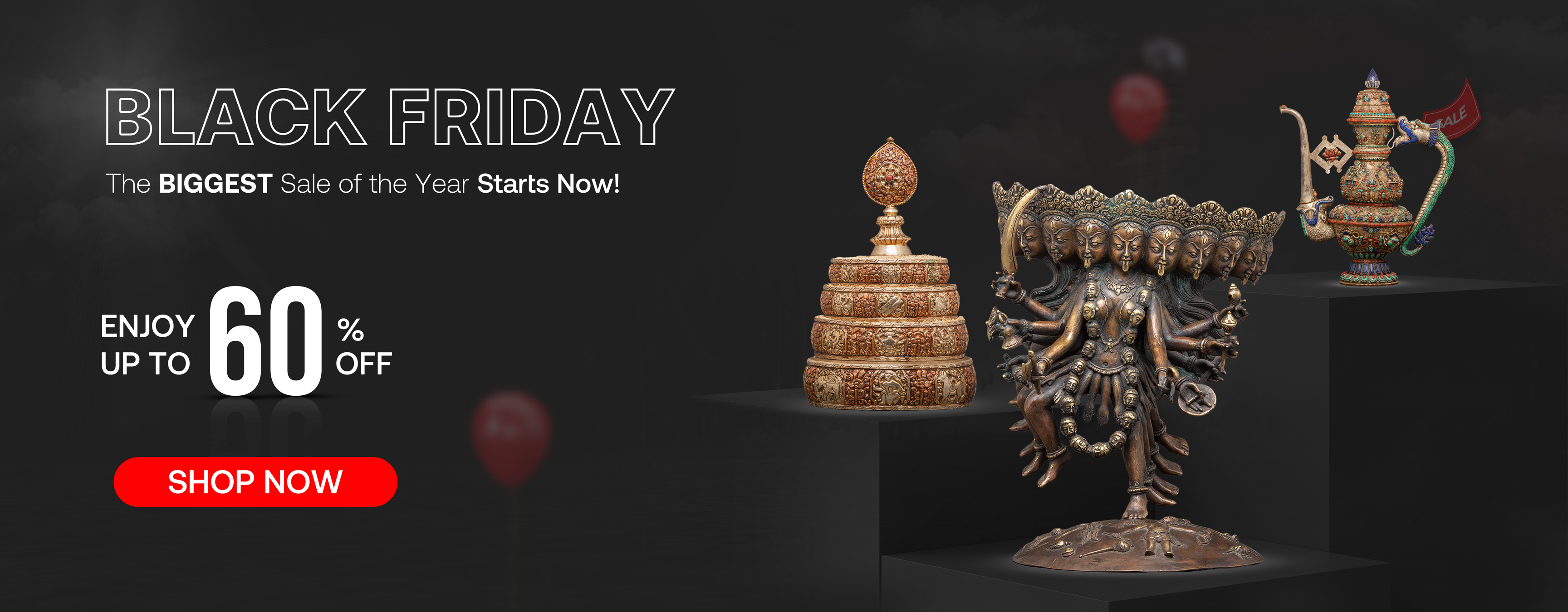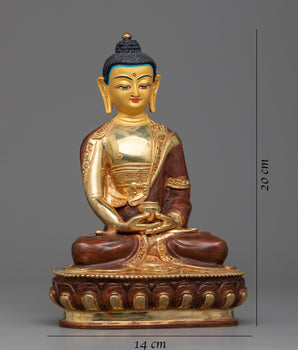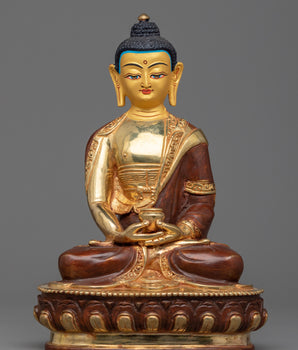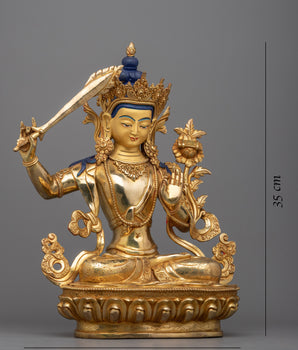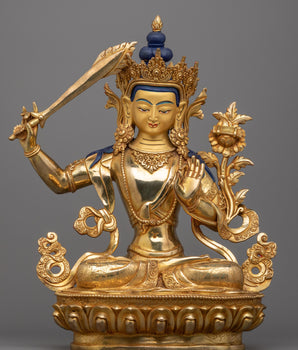Indra is one of the most prominent deities in both Hinduism and Buddhism, yet his role and symbolism shift dramatically between the two traditions. While rooted in the same Vedic mythology, each religion reshapes Indra’s narrative to align with its philosophy, values, and artistic tradition. This blog explores Indra’s transformation across religions, iconography, cultural practices, and historical relevance, with image suggestions to make it visually engaging.

Shared Origins of Indra: The Celestial Lord
Indra originates from the Rigveda as the thunderbolt-wielding warrior god of rain, storms, and warfare. Known for slaying the serpent Vritra and releasing the waters to nourish the earth, Indra became the king of gods (Devas) in early Vedic religion. Over centuries, his mythology traveled across South and Southeast Asia, appearing prominently in Buddhist cosmology.
Evolution of Worship
Indra’s earliest depictions in Vedic hymns focus on natural phenomena and heroic exploits, establishing him as a crucial force in maintaining cosmic balance. As religious systems evolved, his image adapted to reflect each tradition's worldview.
Name Variants Across Cultures:
-
Sanskrit: Indra
-
Pali: Sakka
-
Tibetan: Gyalpo Rinpoche
-
Chinese: Dìshìtiān (帝释天)
Indra in Hinduism
In Hinduism, Indra rules Svarga Loka and presides over rain, fertility, and prosperity. A central deity in Vedic worship, Indra symbolizes divine authority and the protection of cosmic order. Stories from epics like the Mahabharata depict him as both heroic and humanized.
Indra (Sakka), the Ruler of Trāyastriṃśa Heaven
In Buddhism, Indra becomes Sakka, the ruler of Trāyastriṃśa Heaven located on the summit of Mount Meru. This heavenly realm is a symbol of karmic merit rather than divine supremacy. Sakka is portrayed as a humble disciple of the Buddha, representing a philosophical shift toward enlightenment over divine power.
-
Ruler of the 33 gods residing in Trāyastriṃśa Heaven.
-
Often kneels or bows before the Buddha in Buddhist thangkas and mandalas.
-
A celestial king, yet mortal and bound by karma.
Iconographic Comparison: Indra vs. Sakka
| Aspect | Hinduism | Buddhism |
|---|---|---|
| Status | King of gods, major Vedic deity | Heavenly king, but mortal and reborn |
| Attitude | Commanding, regal, warrior-like | Humble, reverent, disciples of the Buddha |
| Symbolism | Power, rain, war, prosperity | Merit, humility, Dharma protection |
| Depictions | Seated on Airavata, crowned, wielding Vajra | Seated on Royal Pose, wearing Bodhisattva Jewels. Have Three Eyes |
Click here to View our Lord Indra's Mask
Indra Jatra: Cultural and Religious Intersection
Indra Jatra in Kathmandu Valley blends Hindu and Buddhist traditions. The festival features:
-
Chariot processions with the Living Goddess Kumari.
-
Masked dances of Lakhe and Pulu Kisi.
-
The Yosin pole-raising ceremony at Hanuman Dhoka.
-
Ancestral remembrance rituals with butter lamps.

Click to Veiw Lord Indra's Thangka
Indra’s dual image across faiths symbolizes cultural exchange and philosophical growth. In Hindu art, he appears regal and commanding; in Buddhist art, he kneels in humility before the Buddha. This iconographic contrast demonstrates each faith’s worldview and values.
Indra is the same mythological figure across both Hinduism and Buddhism, but his depiction shifts dramatically: Hinduism portrays him as a mighty warrior-king, while Buddhism reframes him as a humble protector of Dharma. Festivals like Indra Jatra and centuries-old art highlight how this shared deity bridges cultures and philosophies.


